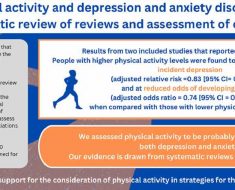Proteins can suppress appetite, so a protein-rich diet can help people lose weight. That's just one of the reasons why this kind of diet has become increasingly popular in recent years. Working with mice, researchers at ETH Zurich have now demonstrated a new mechanism by which the building blocks of proteins – the amino acids – curb appetite. Specifically, it involves what are known as non-essential amino acids.
Of the 21 amino acids our bodies require, there are 9 they are unable to produce on their own. They are called essential amino acids. Because we must obtain these through our diet, they have far been the focus of nutrition research. The other 12 amino acids are considered non-essential. The body can produce them itself by altering other molecules.
Shown in mice
It has been known that both essential and non-essential amino acids can suppress appetite. For the non-essential amino acids, the mode of action had not yet been demonstrated in living organisms, however. Now, a group of researchers led by Denis Burdakov, Professor of Neuroscience at ETH Zurich, have shown for the first time in a living organism that the non-essential amino acids influence the brain in a way that curbs appetite and promotes exercise.
The researchers first fed mice either a mixture of various non-essential amino acids or a sugar solution with the same amount of calories (control group). Both groups of mice were then allowed to drink a milkshake, which they normally love. While the control group drank copious amounts of it, the mice that had been fed non-essential amino acids avoided theirs. Instead, they went around their enclosure in search of alternative sustenance.
Rooted in evolutionary history
With additional experiments, the researchers were able to decode the underlying mechanism, in which specialized nerve cells in the brain – orexin neurons – play the main role. Proteins that the mice take in through food are broken down in the gut into their amino acids, which then enter the bloodstream. From there, the blood transports them to the brain. The orexin neurons in the hypothalamus have receptors that specifically recognize the non-essential amino acids. In response, they initiate a neural circuit that produces the described behavioral changes.
This mechanism is likely rooted in evolutionary history.
Today, we have sufficient access to all nutrients, and we have plenty of time for eating. In prehistoric times, when this mechanism developed, that was likely not the case. Back then, it was advantageous for individuals to spend only a short amount of time at a food source that consisted primarily of non-essential amino acids."
Paulius Viskaitis, postdoc in Burdakov's group and lead author of the study
If eating non-essential amino acids promotes the urge to move, the animal will go in search of other sources of food – which potentially contain more essential nutrients and are more important for the individual.
Viskaitis stresses that the results are transferable to humans and other animals, as this mechanism affects a region of the brain that is very old in terms of evolutionary history and occurs equally in all mammals and many other vertebrates. Still, for people who want to lose weight, a diet that includes especially many non-essential amino acids cannot be recommended across the board, Viskaitis says. Nutritional recommendations should be made on an individual basis, and they should also take health aspects into account.
ETH Zurich
Viskaitis, P., et al. (2022) Ingested non-essential amino acids recruit brain orexin cells to suppress eating in mice. Current Biology. doi.org/10.1016/j.cub.2022.02.067.
Posted in: Molecular & Structural Biology | Biochemistry
Tags: Blood, Brain, Diet, Exercise, Food, Hypothalamus, Nerve, Neurons, Neuroscience, Nutrients, Nutrition, Protein, Research
Source: Read Full Article





